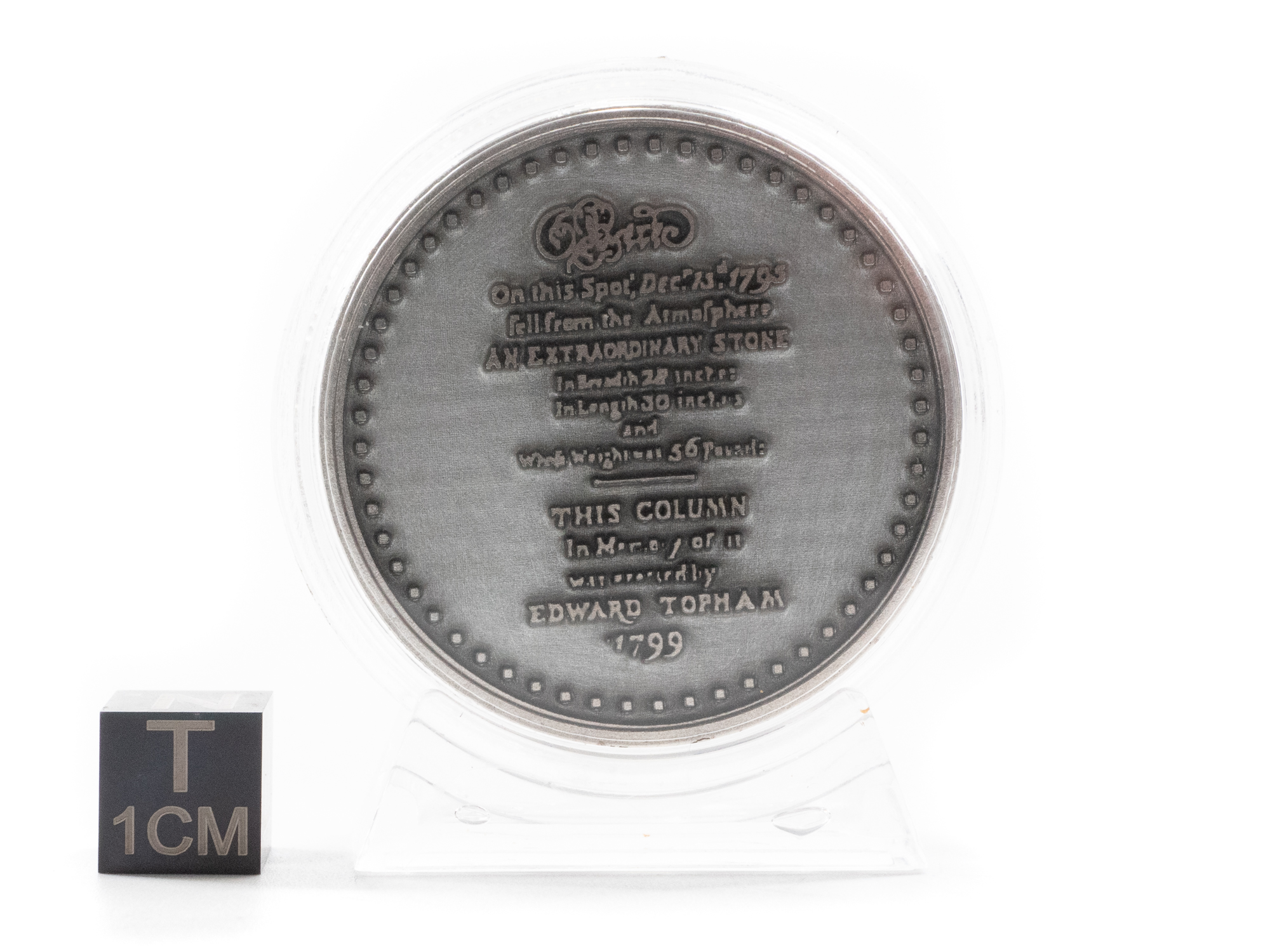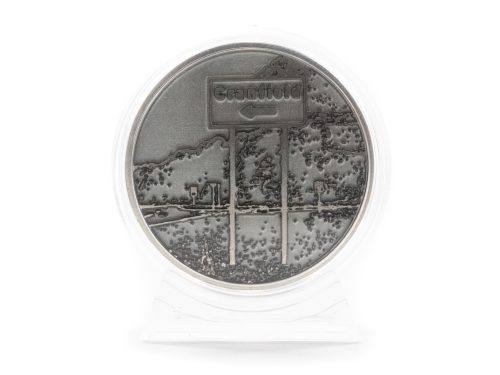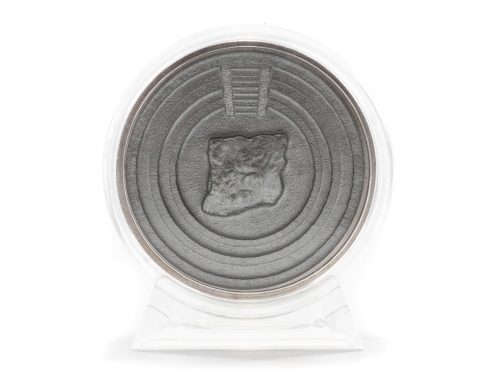Description
Coins have a long history as a collectible, one far older than that of meteorites. Stories of the famed emperor Augustus collecting and gifting old and foreign coins appear in Suetonius’s De vita Caesarum, which was published in 121 AD. Modern coin collecting centers around a variety of approaches, including historical, artistic, topical, and economic.
In 2004, Liberia made history as the first country to authorize the issue of a legal tender coin; a silver coin embedded with a piece of the NWA 267 meteorite. Multiple countries have followed suit, and meteorite collectors can now also add artistic commemorative coins, such as this, to their collections.
An affordable alternative to silver coins, this coin depicting the Wold Cottage monument is made of stainless steel.
“The Wold Cottage meteorite (also called the Wold Newton meteorite) fell near Wold Cottage farm in 1795, a few miles away from the village of Wold Newton in Yorkshire, England
The stone fell at around 3 o’clock, on 13 December 1795, landing within a few yards of ploughman John Shipley.[2] It created a crater approximately 1 yard (0.91 m) across, and embedded itself in the underlying chalk rock to a depth of 7 inches (180 mm), passing through 12 inches (300 mm) of topsoil. The fall was observed by several people, who described a dark body passing through the air.[3] As discovered at its landing point, the stone was warm and smoking; several people reported sounds of explosions as it fell.[4] The owner of the land was Major Edward Topham, a well-known public figure, an ex-soldier, playwright and newspaper proprietor; he publicised the find and exhibited the meteorite publicly at Piccadilly in London.[5][6]
The stone initially weighed 56 pounds (25 kg).[7] James Sowerby, a naturalist, acquired the meteorite in 1804.[5] The meteorite was later acquired by the British Museum in 1835.[5][8]
A monument was erected on the location of the stone’s impact, by Major Topham, on whose property the stone had fallen.[14] The structure was built of brick 4 ft (1.2 m) square and 25 ft (7.6 m) high, with a plaque on one face.” Sited Wikipedia
| Inscription |
|---|
| Here |
| On this Spot, Decr. 13th, 1795 |
| Fell from the Atmoſphere |
| AN EXTRAORDINARY STONE |
| In Breadth 28 inches |
| In Length 36 inches |
| and |
| Whoſe Weight was 56 pounds. |
| —- |
| THIS COLUMN |
| In Memory of it |
| Was erected by |
| EDWARD TOPHAM |
| 1799 |






Reviews
There are no reviews yet.